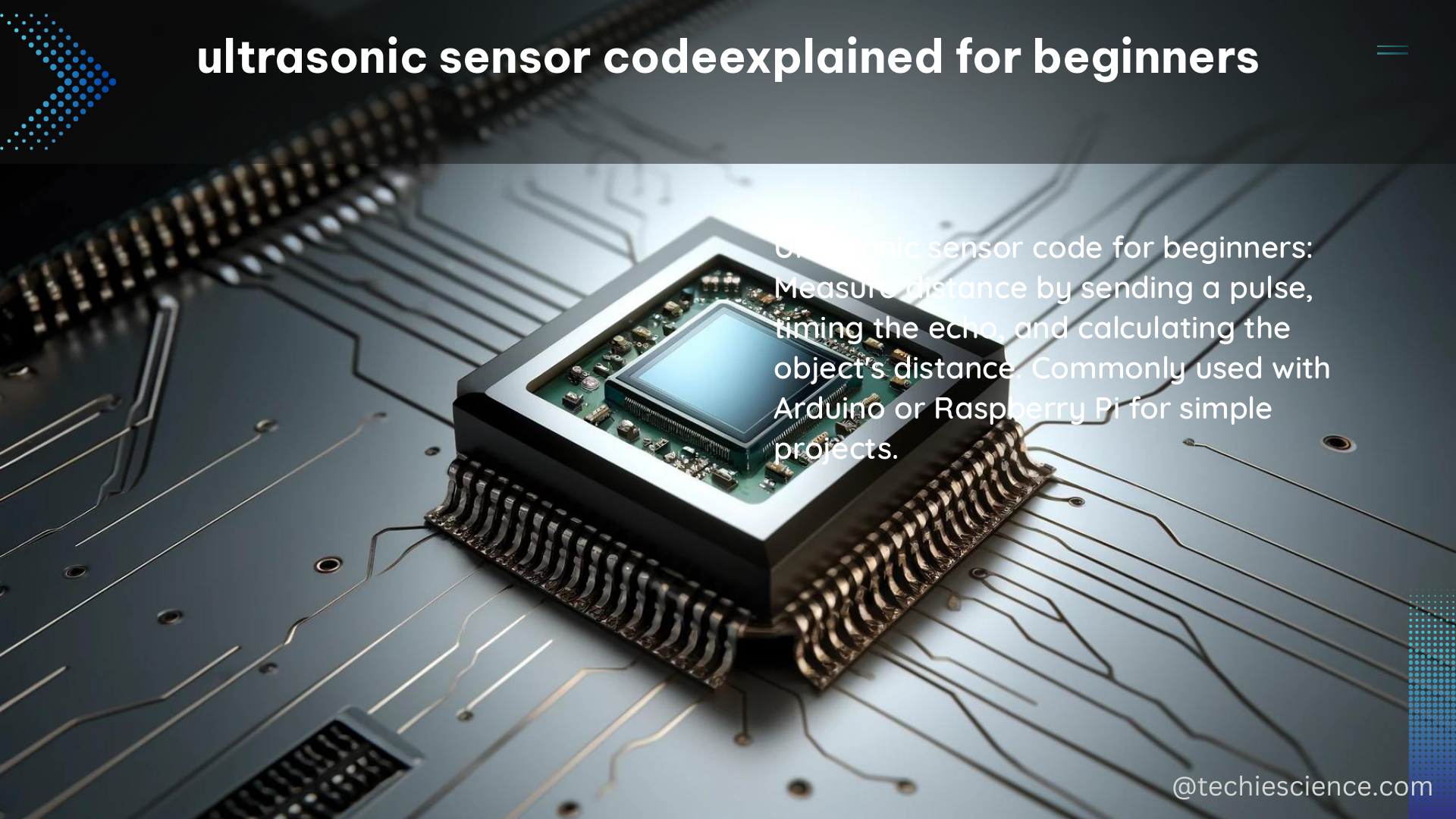The HC-SR04 ultrasonic sensor is a popular choice for measuring distance using an Arduino. It works by emitting bursts of ultrasonic sound and measuring the time it takes for the sound to reflect back to the sensor. This time is then converted to distance using the speed of sound in air.
Connecting the Ultrasonic Sensor to Arduino
To get started with the HC-SR04, you’ll need to connect it to your Arduino board. The sensor has four pins:
- VCC (power)
- GND (ground)
- Trig (trigger)
- Echo (echo)
The VCC pin should be connected to 5 volts, GND to ground, Trig to a digital output pin (e.g., pin 7), and Echo to a digital input pin (e.g., pin 8).
Measuring Distance with Ultrasonic Sensor

Once connected, you can use the Arduino’s pulseIn() function to measure the duration of the echo pulse, which is proportional to the distance to the target. This duration can then be converted to distance using the formula:
distance = (duration * 0.034/2)
Where:
– duration is the time in microseconds it takes for the ultrasonic pulse to travel to the target and back
– 0.034 is the speed of sound in air (34,000 cm/s)
– Dividing by 2 gives the one-way distance to the target
To measure within a specific range, you can use conditional statements to check if the measured distance falls within the desired range. For example, the following code measures the distance to the target and only prints the result if it falls within a certain range:
const int minDistance = 10; // minimum distance in cm
const int maxDistance = 30; // maximum distance in cm
int distance = Sonar1.ping_cm();
if (distance >= minDistance && distance <= maxDistance) {
Serial.print("Distance: ");
Serial.println(distance);
}
Technical Specifications of HC-SR04 Ultrasonic Sensor
The HC-SR04 ultrasonic sensor has the following technical specifications:
| Specification | Value |
|---|---|
| Measuring Angle | 15 degrees |
| Measuring Range | 2-400 cm |
| Accuracy | ±1 cm |
| Operating Frequency | 40 kHz |
| Supply Voltage | 5V |
The sensor’s trigger pin should be pulsed with a 10 microsecond high signal to initiate a measurement, and the echo pin will output a pulse whose duration is proportional to the distance to the target.
Building a Ultrasonic Distance Sensor with Arduino
To build your own ultrasonic distance sensor using the HC-SR04 and an Arduino, you’ll need the following components:
- HC-SR04 ultrasonic sensor
- Arduino board (e.g., Arduino Uno)
- Breadboard and jumper wires
Connect the sensor to the Arduino as described earlier, and then upload the following code to the Arduino:
const int trigPin = 7;
const int echoPin = 8;
void setup() {
pinMode(trigPin, OUTPUT);
pinMode(echoPin, INPUT);
Serial.begin(9600);
}
void loop() {
long duration, distance;
digitalWrite(trigPin, LOW);
delayMicroseconds(2);
digitalWrite(trigPin, HIGH);
delayMicroseconds(10);
digitalWrite(trigPin, LOW);
duration = pulseIn(echoPin, HIGH);
distance = (duration * 0.034 / 2) / 10; // convert to cm and divide by 10 to get percentage
if (distance >= 0 && distance <= 100) {
Serial.print("Distance: ");
Serial.print(distance);
Serial.println("%");
}
delay(100);
}
This code will measure the distance to the target and print the result as a percentage of the maximum distance (100 cm in this example).
Conclusion
The HC-SR04 ultrasonic sensor is a versatile and affordable sensor that can be used to measure distance in a variety of Arduino-based projects. By understanding the technical specifications and how to connect and program the sensor, you can create your own custom distance-sensing applications.
References
- Arduino Tutorial 55: Measuring Distance With HC-SR04 Ultrasonic Sensor – YouTube
- HC-SR04 Ultrasonic Distance Sensor and Arduino (Lesson #9) – YouTube
- measuring within a range ultrasonic sensors – Arduino Forum
- Simple Virtual World Using Ultrasonic Sensor | Technology Tutorials
- Ultrasonic Sensor HC-SR04 and Arduino – Complete Guide – How To Mechatronics

The lambdageeks.com Core SME Team is a group of experienced subject matter experts from diverse scientific and technical fields including Physics, Chemistry, Technology,Electronics & Electrical Engineering, Automotive, Mechanical Engineering. Our team collaborates to create high-quality, well-researched articles on a wide range of science and technology topics for the lambdageeks.com website.
All Our Senior SME are having more than 7 Years of experience in the respective fields . They are either Working Industry Professionals or assocaited With different Universities. Refer Our Authors Page to get to know About our Core SMEs.